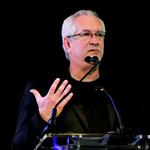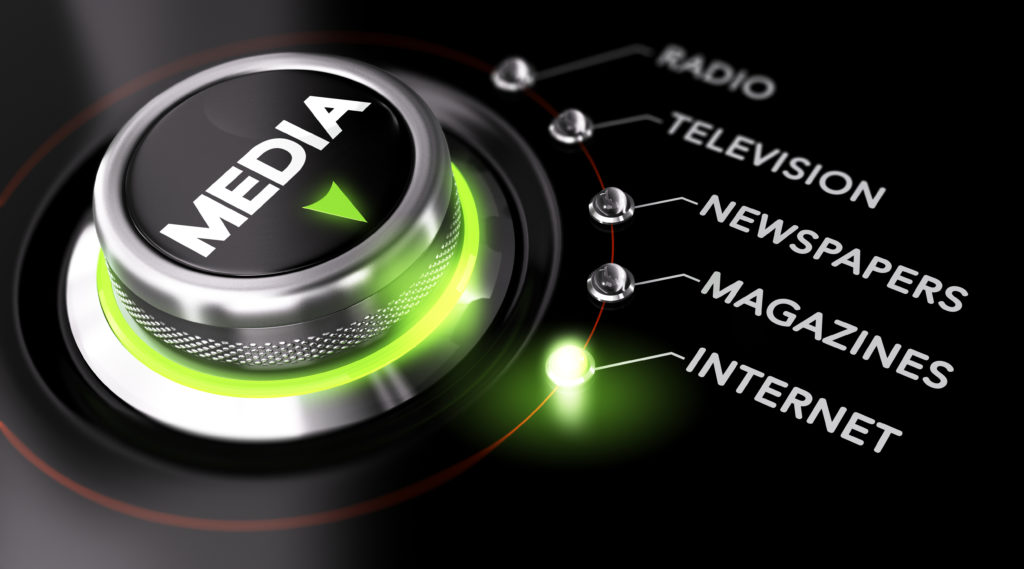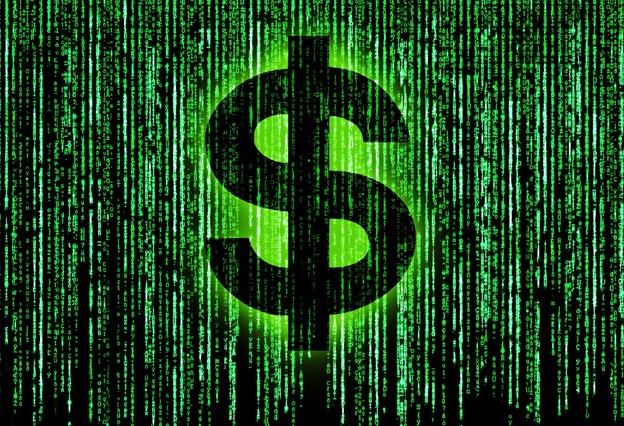
Paul Jacobs has now been with Jacobs Media for more than a quarter century. During that time, he’s provided Jacobs Media and jācapps with sales strategies designed to help our clients maximize their ratings – or their mobile apps – in the marketplace.
He’s also driven considerable research in the sales space, including extensive interviews with advertisers, retailers, and media buyers, as well as breakthrough studies like “Marketing To Men.”
Paul is not a sales trainer, but he has become a marketing strategist. And his perspective on thea changing media landscape is the focus of today’s  blog post. While broadcasters need to address their content, the ability to market these products is becoming increasingly more challenging. Today, he provides a wizened viewpoint, along with a gang of eight strategies stations can apply to their local situations.
blog post. While broadcasters need to address their content, the ability to market these products is becoming increasingly more challenging. Today, he provides a wizened viewpoint, along with a gang of eight strategies stations can apply to their local situations.
Just as programming has to rethink its approach to content – podcasts, Alexa, streams, video – sales management needs to rethink its marketing efforts as the media landscape changes. – FJ
For the past several years, there’s been a rapid shift of advertising dollars, first to programmatic, and now to digital and the insightful data it provides. Initially, this made a lot of sense. With programmatic, advertisers were able to seamelssly and efficiently place buys at low rates, and broadcasters were able to sell excess inventory that would otherwise vanish or go unsold.
With digital, advertisers are able to precisely target their messages to specific groups, while more accurately measuring the impact in clicks and other attribution-based solutions. Meantime, many advertisers have gravitated away from the “spray and pray” nature traditional media – newspapers, TV, and yes, radio.
Marketers often struggle with their priorities – is their goal to brand their products or are they simply going for the best transactional direct response for their advertising efforts?
Recently, two big players in the space weighed in – espousing two very different philosophies – about what’s working and what isn’t.

Let’s start with the biggie – Procter & Gamble. They only represent $7 billion or so of ad spend a year. So, best we pay attention to what they’re thinking.
On a recent earnings call, CEO David Taylor discussed new thinking at P&G designed to make marketing more efficient by eliminating waste. This includes taking a sharp #2 pencil to agency fees and production costs.
Media Post‘s Richard Whitman says part of the savings has been derived from reducing the frequency of ads – and that includes what he calls “wasteful mass marketing.” Instead, P&G’s goal is to foster “one-to-one brand building enabled y data and technology.”
Data analytics plays a growing role in Taylor’s efforts thank to a new in-house platform that focuses on more in-store efforts rather than traditional advertising.
The push/pull relationship between branding and direct response goes to the heart of the dilemma raging inside many agencies and among account and brand managers.
Some feel that along the way, a few key principles of advertising and marketing may have gotten lost in the digital shuffle. One of these voice is Havas CEO Colin Kinsella. According to a recent interview in ad exchanger by Alison Weisbrott, Kinsella feels the pendulum swinging back toward traditional media. Kinsella cites many factors that explain this reversal of media fortunes:
“A lot of buyers want to get back into TV, radio, out-of-home and print because they feel like digital can get lost. The most accountable media turned into the least accountable media and the most filled with fraud.”
You may recall in 2017, Procter & Gamble cut its digital ad spend by $200 million, citing similar concerns, including bots, deception, and brand safety concerns caused by having ads appear on suspect web sites and as pre-rolls to negative content on YouTube videos. Instead of dropping these train car loads of dollars to the bottom line, P&G shifted them into areas with “media reach,” including television, audio and ecommerce.
The result? Their ad reach increased by 10%, while revenue rose 2%, generating an improved profit margin.
Another recent trend in advertising is the rapidly growing demand for attribution, something the radio industry has had trouble proving. Until recently, sellers have been unable to connect consumer actions to advertising so they’ve been left with Nielsen estimates (otherwise known as “ratings”) to demonstrate reach and frequency. For advertisers who demand more precision, it’s like taking a knife to a gun fight.
To fill the void, companies like Veritone, Analytic Owl, and others have emerged in an effort fill the gap. Each has an interesting approach to measuring one piece of the attribution puzzle – how social media or search increase after an ad runs on the station, for example. And in the car, Drivetime Metrics, Connected Travel, and NextRadio have begun to demonstrate with ad tracking and geo-location behaviors of drivers when they hear ads.
But as promising as all of these solutions may be, none can answer the one question every advertiser has:
Did my advertising work?
The seeds of the solution for radio can be found in this response from Kinsella. When asked how marketers can get value from programmatic while still building their brands, he responds:
“You can almost make a direct correlation between the rise of digital and the decrease in connection to brands. We found that 81% of people don’t care [if a given brand] goes away. Where is media’s role in helping bring back that brand equity? Clearly more digital isn’t the answer. It’s not [working], because marketers are cutting budgets.”
These are very confusing times for traditional media like radio. Companies are under pressure to adapt to these new demands from advertisers, but they have to do so without abandoning the medium’s fundamental value proposition. The industry constantly cites the 93% reach statistic which, while impressive, is completely contrary to a digital/data mindset. Thus, many are investing in data attribution solutions.
But, if advertisers are beginning to swing back toward a branding orientation, what’s the right play in an increasingly crowded field that offers both digital and traditional solutions?
Maybe the strategy is to go hard in both directions. Unlike newspapers, where reach has all but disappeared, and television, which has been significantly disrupted by cord cutting and network on-demand bypass, radio is in a prime position to have it both ways.

Here are 8 steps to consider as broadcast radio teams rethink, reboot, and reimagine their marketing approaches:
- Radio 101 – Sellers need to sell the benefits of the radio industry more effectively. I’m in a lot of sales meetings and it’s frustrating to see the overall lack of knowledge and passion for radio’s strengths, which are frequently taken for granted. Sellers are being bombarded with objections from advertisers (“Everyone’s listening to Spotify”) and aren’t armed with proper comebacks. It’s time to take them back to RAB school and make sure we’ve got boots on the ground in local markets, every day, proselytizing about radio’s unique ability to build brand strength and awareness, as well as put butts in seats.
- Success stories – How can stations that have been around for 10, 20, or 50 years not have an entire arsenal of “Radio Works” stories that can peel off at a moment’s notice? I am often amazed and appalled that mature local stations with great track records in their markets don’t have a raft of great tales to tell about how they made a huge impact for all kinds of advertisers. I can tell you that if you ask about Jacobs Media or jācapps wins, I can fill an entire day with specifics, examples, and references who can attest to the job we’ve done – and what we can do for a prospective client.
- Quality control – If you want to be taken seriously in today’s disruptive advertising environment, you’d better look good and be able to stand up next to sales materials from Google, Spotify, and Pandora. Too often, broadcast radio sales materials are amateurish, inconsistent, and poorly conceived. Oftentimes, there’s not a process in place to ensure that sales pieces, proposals, brochures, and pitches aren’t properly constructed and vetted. And spell-checked.
- Human resources – Expect more from your sales managers (and in turn, your salespeople). I have long believed the position should be transitioned to Director of Sales Strategies. The DOS and GSMs need to be thinking about more than just “making goal.” Like PDs up at night sweating strategy, sales management needs to get more creative, resourceful, and yes, strategic. A huge one-day sale to “make the month” is a tactics, like “Twofer Tuesday.” Local radio brands need strategic thinking from their management teams. What’s the position of your sales team? (Yes, programming has one – sales should, too.)
- Trust, but stabilize your staff -Our research shows many advertisers are looking for credible answers, especially on the local market level. Many radio groups have some of that inherent trust in place, in a position to advise retailers and even agencies. We continue to hear from marketers about how a savvy, stable, trusted local sales staff can be a difference maker during these confusing times.
- Try stuff – Broadcasters need to experiment with attribution solutions. Some of the companies mentioned above believe they can solve a problem – let’s put them to the test and if an able solution emerges, let’s embrace it.
- Hello, Nielsen – While this is going on, pressure needs to be applied to Nielsen to step it up. Audience estimates aren’t adequate enough, and if any company should be providing digital measurement and attribution solutions that can be combined with ratings, it’s them. Broadcasters will move away from traditional measurement if it can’t provide a more comprehensive and trusted solution, especially given the costs.
- Go all in – Yes, advertising on the radio has plenty of validity. But there no denying that digital is a force – and it’s the only category in radio that continues to head north. Radio broadcasters need to passionately promote, market, and integrate its digital assets. No medium does a better job of driving the audience to its social media pages, mobile apps, streams, or websites. Or to stores, stadiums, and festivals, and events. And we know from our Techsurvey data the audience is shifting to consuming broadcast radio on digital platforms. The opportunity exists to grow these digital channels and become the rare traditional medium – one that can not only provide outstanding brand awareness and brand development for its advertisers, but also digital solutions that can provide data and attribution.
The “Let them eat cake” strategy also gives advertisers the chance to combine traditional and digital efforts in integrated packages – something they cannot get from Spotify, SiriusXM, or Facebook. Packaged and presented well, it can offer the best of both worlds.
So, try the cake. It’s good for radio.
- For Radio, Will It Be Christmas In April (And Hopefully, May)? - April 21, 2025
- The Revolution Will Not Be Monetized - December 30, 2024
- What Kind Of Team Do You Want To Be? - October 4, 2024




Excellent read, Paul. I believe many of your points are spot on. Thank you for assembling the “eight steps to consider.”
Thanks, Dennis. We are living in interesting times. Change is all around us, and it’s clear doing business the same old way is not the road to growth.
Paul
Bravo Paul – especially pt 4. Can I add that throughout my career I’ve been looped in on a lot of sales goals but hardly ever does the sales team want to seem bothersome and share their sales “strategies” with us in programming I’m begging you, bother me! I think our industry depends on sales and programming strategies being shared with each other.
J.T., there are too many instances where sales simply does not include programming into its planning. As programmers, we’re used to having our products researched and analyzed – something that needs to happen with more regularity and discipline on the sales side. Thanks for the comment.
Working for a company where most of our people focus on programming, I see the benefits of strategy. In sales, there virtually is none, which works to the advantage of the advertisers. Since most radio stations allow themselves to be valued based on ratings and pre-set cost-per-points, stations become equalized, and thus, lose value. A viable sales strategy can change all that.
Thanks for the great comment.
9) Spec spots of various lengths…
Even :05’s and :10’s.
Written/conceived by the most creative people in the building.
Especially those rare few who actually know how to write.
Why even bother dropping off yet another lame sales deck with
clip art of happy, good-looking radio listeners.
Marty Bender
Oh yeah, there’s that. Thanks, Marty, for the comment and for pointing out a key radio asset that often goes under-utilized.
Marty, I have a feeling we can come up with at least 20, but your #9 is a good one. Why sell like everyone else? Why not bring creativity into the mix and provide the advertisers with something they truly want? Nobody gets passionate about rankers and hitting a CPP. But they do get excited about a great idea, and will pay more for it!